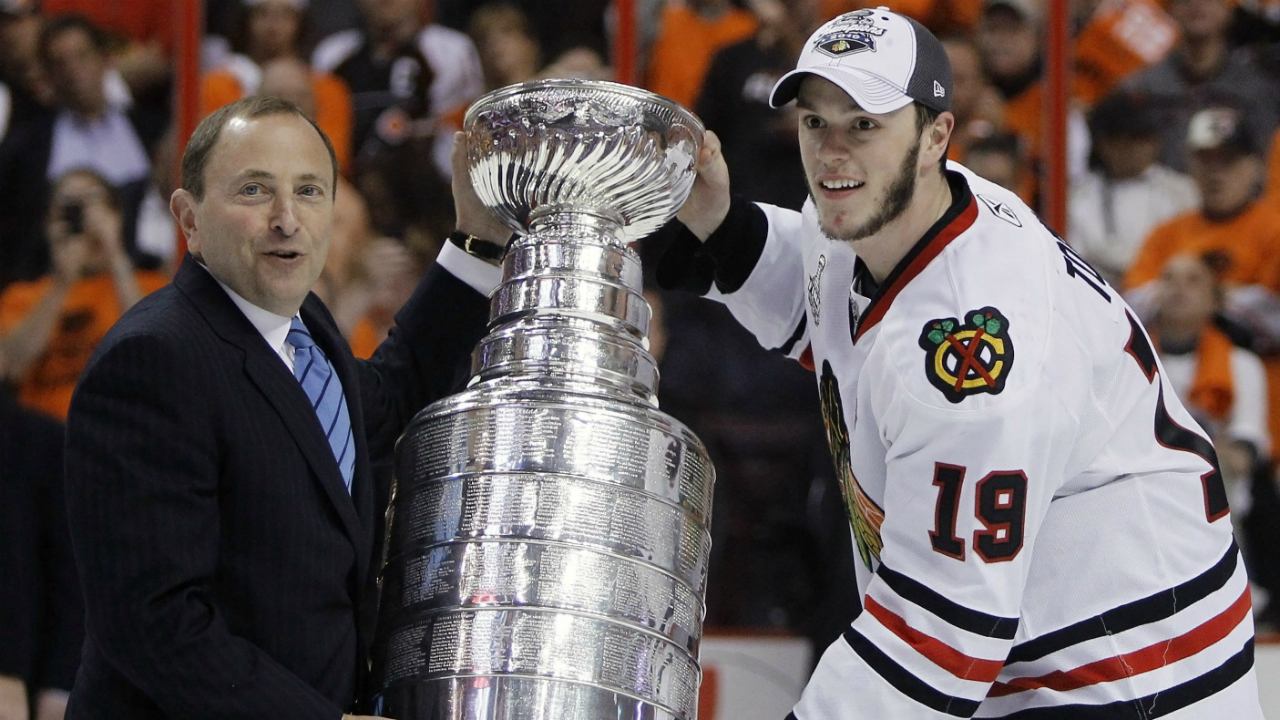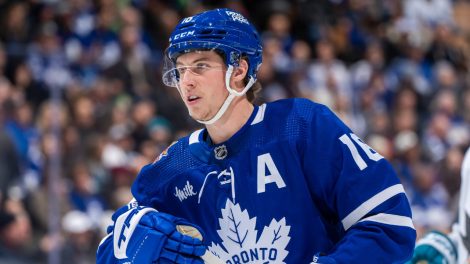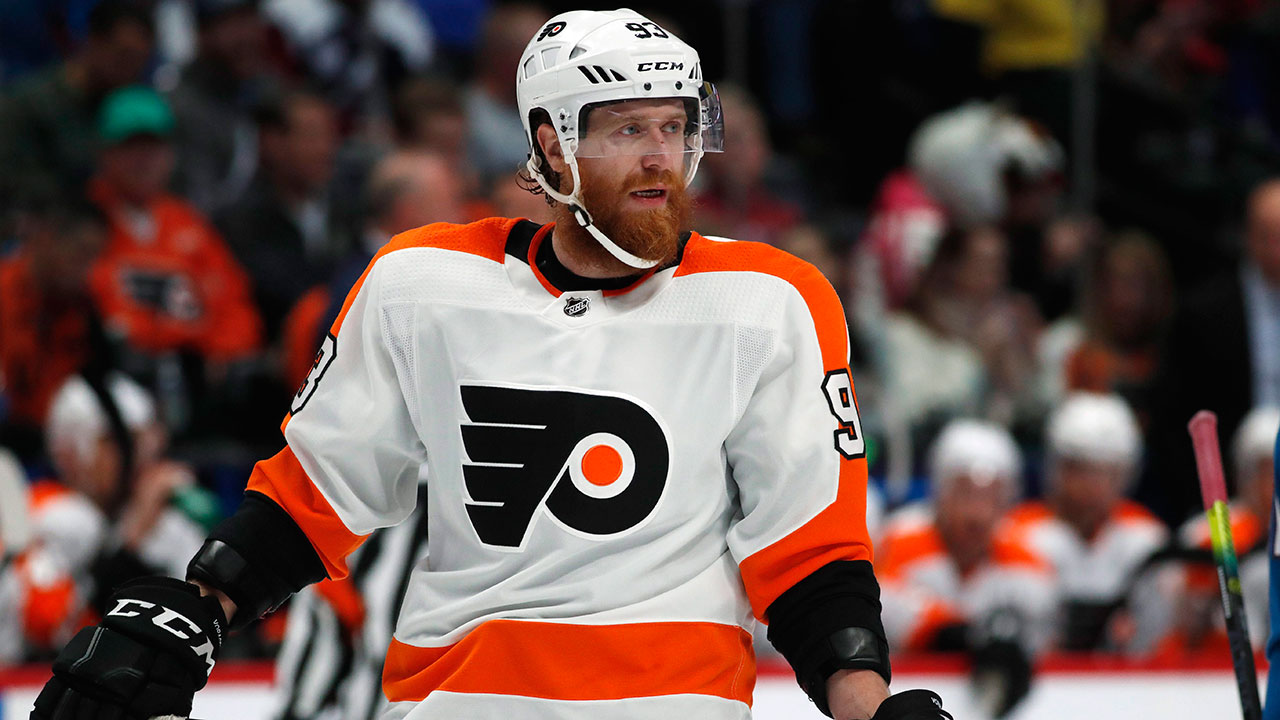Sean McIndoe (aka Down Goes Brown) will be contributing to sportsnet.ca on a regular basis. Follow him @DownGoesBrown
The losing is the easy part.
That’s the conventional wisdom when it comes to the traditional NHL rebuild plan. You know the one: Strip away any and all veteran talent, clear out payroll, and lose big for a few years while racking up high picks that will turn into future stars.
Some would call it thinking long-term, or executing a strategic vision, or a five-year plan. Others might go with “tanking”. But it’s a popular strategy, one that can be seen in action in various cities around the league in any given year. The Buffalo Sabres have been on it for years. The Toronto Maple Leafs are doing it right now. Many Canucks fans are hoping their team is next.
But, we’re warned ominously whenever the topic comes up, there’s one big catch: the losing is the easy part. Anyone can do the teardown – it doesn’t take much vision to build a loser. But when it’s time to flip the switch and win again, that’s where it gets tricky. Sometimes, when it’s time to finally hit the gas, you find that the wheels won’t catch.
Ask any Oilers fan, after a full decade of watching their team rack up high picks and last-place finishes. Or anyone who rooted for the New York Islanders a decade ago, or the Florida Panthers, or the Atlanta Thrashers.
 Patrik Stefan, from the Czech Republic, poses with Atlanta Thrashers’ President Harvey Schiller after being selected first in the 1999 NHL Entry Draft in Boston Saturday, June 26, 1999 (CP PHOTO/stf-Ryan Remiorz)
Patrik Stefan, from the Czech Republic, poses with Atlanta Thrashers’ President Harvey Schiller after being selected first in the 1999 NHL Entry Draft in Boston Saturday, June 26, 1999 (CP PHOTO/stf-Ryan Remiorz)
Or ask a Sabres fan today, as they watch a well-constructed young team work its way through growing pains, showing flashes of a promising future while still struggling to climb out of the basement.
All serve as cautionary examples: losing is easy, but flipping the switch is where it gets hard. It’s a slow and gradual climb back to respectability, one that can take several years of small steps before you can finally hope to re-emerge as a contender.
There’s one problem: lots of teams have flipped that switch just fine. Recent history shows us that it really is possible to go from last place to elite status remarkably quickly. There are no guarantees, and lots of opportunity to fail along the way. But it can be done, and has been, plenty of times.
Here are five teams that went from laughing stock to legitimate Cup contender in a very short amount of time – and some lessons that future tankers might be able to learn from them.
The teardown: The Hawks are a classic example of a team that spent years stuck in the dreaded mushy middle before finally biting the bullet and embracing the bad. From 1998 through 2001, the Blackhawks finished with a point total in the 70s for four straight years, never picking higher than eighth in the draft. (The one year they had a top five pick, in 1999, they traded it to the Canucks.)
They made the playoffs in 2002, but bowed out in the first round and then dropped back down to 79 points in 2003. With attendance dropping and fans turning on owner Bill Wirtz, the Blackhawks were named ESPN’s worst franchise in pro sports in 2004.
Rock bottom: Beginning in 2003-04, the Blackhawks suffered through three straight seasons of bottom-five finishes. Combined with winning the seventh-overall pick in the draft lottery for the wiped out 2004-05 season, that gave them a solid foundation of high picks to work from. But they whiffed on the first two, taking Cam Barker third overall in 2004 and Jack Skille seventh in 2005.
The turnaround: The team turned the GM reigns over to Dale Tallon in June 2005 and saw him hit a pair of home runs at the next two drafts, landing Jonathan Toews with the third pick in 2006 and Patrick Kane first overall in 2007. Both players debuted in the 2007-08 season, one which began with Wirtz passing away and his son Rocky taking over. The Hawks missed the playoffs but improved to 88 points, then replaced coach Denis Savard with Joel Quenneville days into the following season. They made the conference final in 2009, won the Stanley Cup in 2010, and have been the league’s model franchise for on-ice success ever since.
The lesson: Winning starts at the top. Ownership matters, management matters, and coaching matters. If you don’t get those right, you’re not going anywhere. The Hawks are also a good example of something teams like the Oilers have missed: hitting on draft picks outside the first round, where they’ve found guys like Duncan Keith, Niklas Hjalmarsson and Dustin Byfuglien.
And while Hawks fans may not want to hear it, there’s one more key lesson here: be really lucky. Both Toews and Kane wound up in Chicago largely due to some good fortune. In 2006, Toews dropped when the Blues (Erik Johnson) and Penguins (Jordan Staal) made picks they’d regret in hindsight.
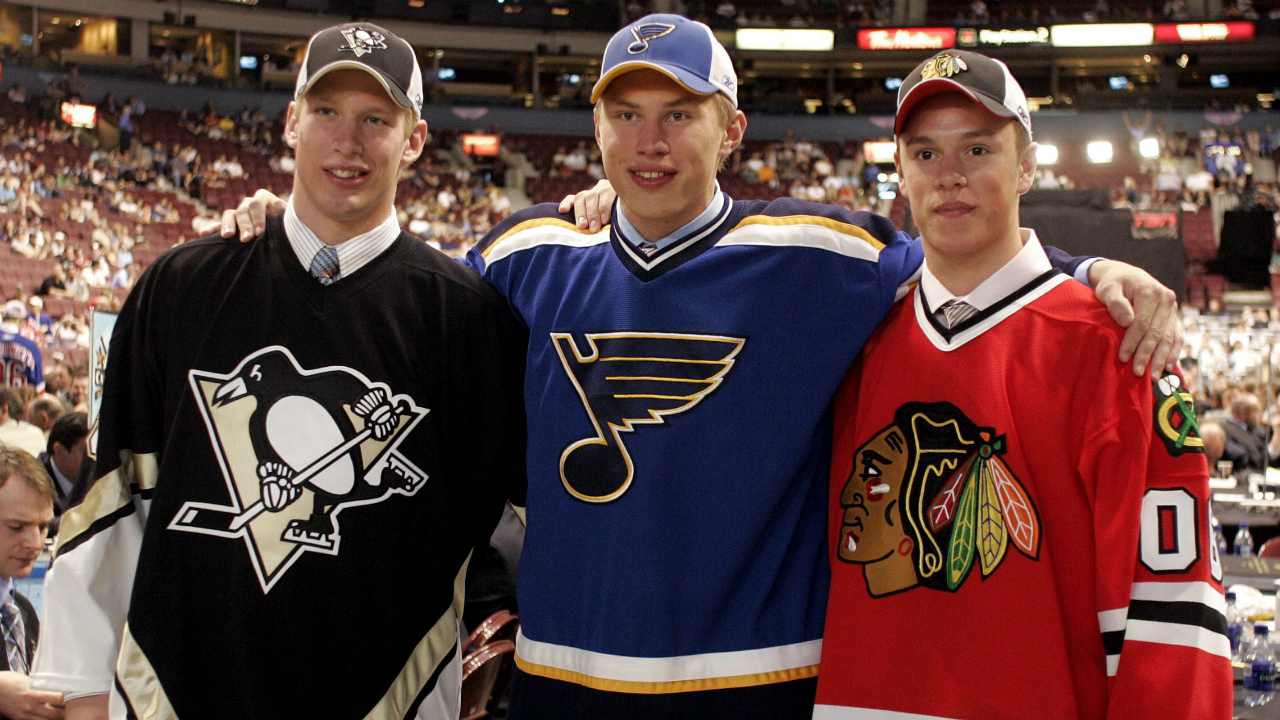 St. Louis Blues and number one overall pick Erik Johnson (centre), Pittsburgh Penguins and number two overall draft pick Jordan Staal (left) and Chicago Blackhawks and number three overall pick Jonathan Toews pose for a photo at the 2006 NHL Entry Draft in Vancouver, B.C., Saturday, June 24, 2006. (CP PHOTO/Chuck Stoody)
St. Louis Blues and number one overall pick Erik Johnson (centre), Pittsburgh Penguins and number two overall draft pick Jordan Staal (left) and Chicago Blackhawks and number three overall pick Jonathan Toews pose for a photo at the 2006 NHL Entry Draft in Vancouver, B.C., Saturday, June 24, 2006. (CP PHOTO/Chuck Stoody)
And in 2007, the Hawks won the lottery and moved up from fourth to first in a draft that turned out to have only one elite player in the top five. Hey, you have to be lucky to be good.
Pittsburgh Penguins
The teardown: After being one of the league’s most successful teams throughout the 90s, a combination of an aging roster and financial troubles led to the Penguins crashing hard after a 2001 appearance in the conference final. The 2001 off-season trade of Jaromir Jagr to the Capitals for picks and prospects signalled a new era, and the Pens plunged to 69 points in 2001-2002. They got worse from there, finishing near the bottom of the standings for four-straight seasons and shedding stars and payroll as they went.
Rock bottom: The Penguins finished dead last in the league in 2003-04, and one point out of the basement in 2005-06, finishing with a measly 58 points both years.
The turnaround: All that losing led to five straight years of top five picks, including four straight picking either first or second. The most famous of those came at the end of the lockout in 2005, when the Penguins won a league-wide lottery for the right to pick Sidney Crosby. They also added Evgeni Malkin, Marc-Andre Fleury and Jordan Staal, forming the core of what would quickly become a very good team.
After struggling through one final rough season in Crosby’s rookie year, the Penguins rocketed up the standings in 2006-07, finishing with 105 points for one of the biggest single-season improvements in league history. It was the young core that drove that leap, with Crosby winning the Hart and Art Ross trophies and Malkin taking home the Calder, while veterans like Mark Recchi and Sergei Gonchar provided support.
By 2008, the Penguins were in the Stanley Cup final, and by 2009 they’d won it all. It had been just three years since they finished back-to-back seasons with 58 points.
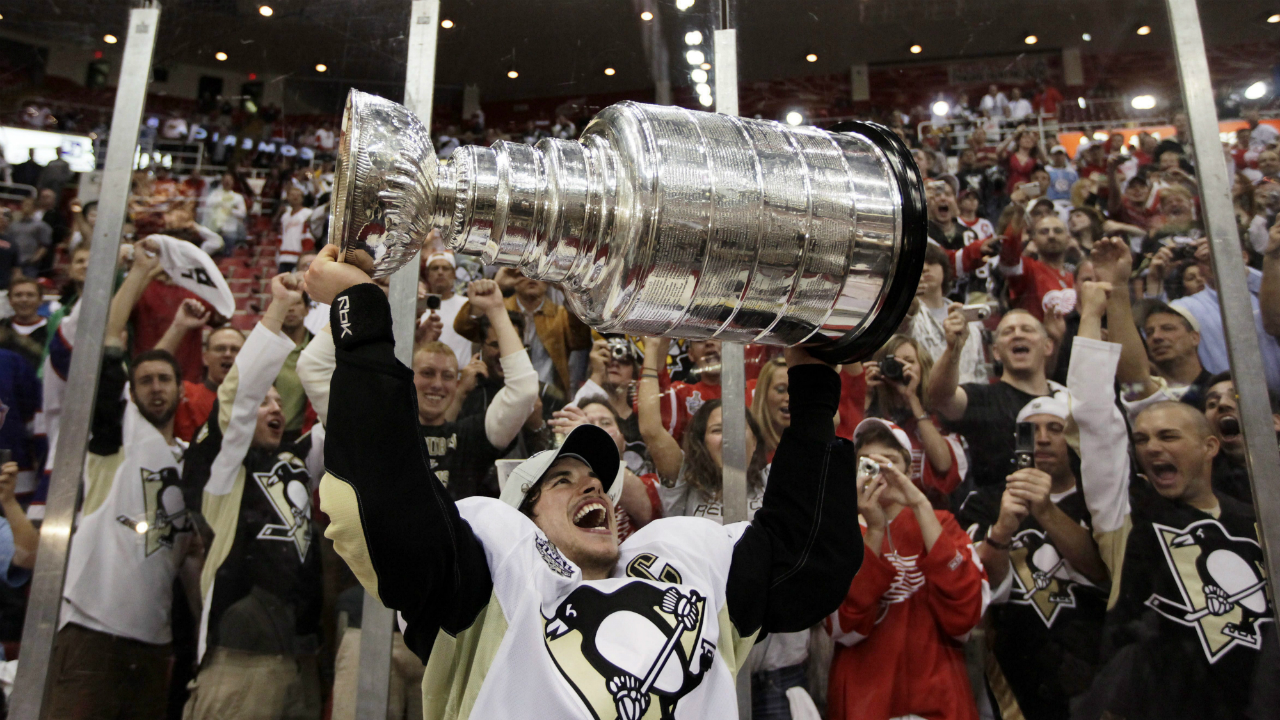 Pittsburgh Penguins’ captain Sidney Crosby holds up the Stanley Cup after the Penguins beat the Detroit Red Wings 2-1 to win Game 7 of the NHL hockey Stanley Cup finals in Detroit.(AP Photo/Paul Sancya, File)
Pittsburgh Penguins’ captain Sidney Crosby holds up the Stanley Cup after the Penguins beat the Detroit Red Wings 2-1 to win Game 7 of the NHL hockey Stanley Cup finals in Detroit.(AP Photo/Paul Sancya, File)
The lesson: The Penguins are probably the most extreme example of the classic rebuild plan in action, the one that frustrated fans in other cities have been pointing to you for years. Granted, there was a massive piece of good luck involved, and “win the Sidney Crosby lottery after a wiped out season” isn’t very helpful advice (as famously pointed out by Brian Burke in his “Pittsburgh model my ass” rant).
But there are other lessons here, including a reminder of the importance of goaltending. The Penguins took an extreme road, investing the first-overall pick in the loaded 2003 draft on Fleury. That’s a tough choice to justify in hindsight given all the ridiculous talent available in that first round. And using high picks on goaltenders is always an ultra-risky strategy, and only one has been taken in the top five since Fleury (Carey Price in 2005), so that’s not the recommendation here.
You don’t even need a superstar to win, as teams like the Hawks have shown. But you do need to find a reliable option, one way or another, and the availability of one can make or break a rebuilding team. The Oilers know that all too well, and it serves as a reminder to teams like the Maple Leafs that still have that empty box on their checklist.
But yeah, mostly try to win the Crosby lottery.
The teardown: The Kings missed the playoffs for six straight seasons beginning in 2003, but they weren’t truly awful for most of those. That landed them four picks in the dreaded 10-15 range, and they hit on two of them, nabbing Dustin Brown at No. 13 in 2003 and Anze Kopitar at No. 11 in 2005.
Rock bottom: After making a run at a playoff spot in 2005-06, the Kings bottomed out the next year, finishing with 68 points. That earned them the fourth-overall pick in 2007, and they whiffed badly, passing on players like Jakub Voracek and Logan Couture to take defenceman Thomas Hickey. The following season saw them struggle again, finishing tied for dead last in the league and picking second overall. They did not whiff on that pick.
The turnaround: The Kings used that 2008 pick on Drew Doughty, who’d head straight to the NHL and become the team’s cornerstone. Combined with the emergence of Kopitar as one of the best two-way players in the league, that gave the Kings two young superstars to build around, and Jonathan Quick‘s arrival locked down the goaltending.
The Kings struggled through one more rough year, with 79 points in 2008-09, before posting 101 points in 2009-10. They’ve finished at a pace between 95 and 101 points in every season since, and are headed there again this year. More importantly, they’ve won two Stanley Cups and counting since hiring Darryl Sutter as coach early in the 2011-12 season.
The lesson: The Doughty pick was clearly the turning point, and it serves as a reinforcement of the Penguins’ Fleury lesson: you can’t just load up on forwards.
That’s easier said than done, since forwards develop faster and are more predictable at 18 years old, making them safer choices. And elite offensive talent still wins in this league, so taking a potential first-line player is never a wasted pick. But eventually you can’t win unless you find a way to fill out the backend, and sometimes that means using a top pick to do it. It’s not without risk – again, Thomas Hickey – but it’s often necessary.
Beyond that, the Kings made a smart call hiring Dean Lombardi in 2006, and he went on to make a series of savvy moves. Some, like signing little-known free agent blue-liner Jake Muzzin, flew under the radar. Others, like his pair of blockbuster trades with the Columbus Blue Jackets, made headlines. As other teams have shown, you can have all the high picks in the world, but eventually you need to bring in the right supporting pieces. Nobody has done that better than Lombardi.
The teardown(s): This one’s a doubleheader. The Lightning finished dead last in the league in 2007-08, then followed that up with a 29th-place performance the following year. After making the conference finals in 2011, they plunged again, this time to 28th in the lockout-shortened 2012-13 season.
Rock bottom: While they finished last in 2007-08, the 2008-09 season was somehow even worse. That was the year that the team’s new ownership replaced John Tortorella with Barry Melrose; he lasted just 16 games before being fired.
The turnaround: The Lightning used their 2008 and 2009 picks on Steven Stamkos and Victor Hedman, and within two years they were a 103-point team that came within one game of playing for the Stanley Cup. The slide back in 2013 was unexpected, but they rebounded even more quickly this time, recording 101 points the following year and then making the Stanley Cup final in 2015.
The lesson: Patience. While the other teams on our list tended to hit their stride and keep it, the Lightning are evidence that it’s possible to take a step back and still emerge as an elite team. That may be comforting to teams like the Flames after this year.
The teardown: After making the playoffs with a 92-point season in 2002-03, the Capitals plummeted the following year, dropping down to 59 points and finishing one point out of dead last. They remained bad after the lockout, posting back-to-back 70-point seasons.
Rock bottom: The 2003-04 season was as bad as they come, as a roster full of big names (and big contracts) imploded. They started the season with a 1-7-1 record, falling out of the playoff chase almost immediately and eventually firing coach Bruce Cassidy. That led to a massive selloff in the season’s second half. They dumped Jagr to the Rangers, and dealt away other veterans like Peter Bondra, Sergei Gonchar and Robert Lang. It was a jarring change of direction, but it worked. After the March 9 deadline, the Caps won just two of their final 13 games to finish tied for 28th overall. The draft lottery did the rest.
The turnaround: By winning the lottery, the Capitals earned the right to draft Alexander Ovechkin, who debuted in 2005-06 and immediately established himself as a 50-goal, 100-point player. The team was still bad – their next highest scorer was Dainius Zubrus – but that led to the drafting of Nicklas Backstrom with the fourth-overall pick. Mike Green and Alexander Semin showed up too, and by 2008 the Caps were winning the first of four-straight division titles. (Granted, it was the Southeast, but it still counts.)
The lesson: For one, trading Jagr sure seems to help, since this is the second team on our list to make that move. In the bigger picture, sometimes it really does pay to be ruthless. The Caps’ 2004 selloff was as ruthless as it was (ultimately) effective. Financial considerations played a role, to be sure, but there’s still a lesson here about biting the bullet.
Not every team needs to strip down completely to turn the tide – the Lightning didn’t ship out Martin St. Louis during either of their low points, for example – but when it’s time to tank rebuild, there isn’t much room for the timid. If it’s time to blow it up, then blow it up real good.
(After that, all you need is a lottery win or two, a smart GM, great ownership, a top coach, excellent development, a good goalie, and a few late-round picks to blossom into unexpected stars. Easy, right?)

